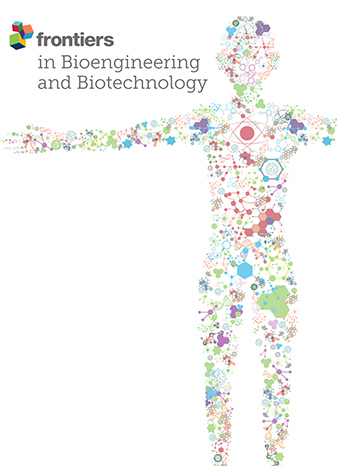腰椎间盘退行性疾病的再生疗法:文献综述
IF 4.3
3区 工程技术
Q1 BIOTECHNOLOGY & APPLIED MICROBIOLOGY
引用次数: 0
摘要
本综述旨在总结腰椎间盘退变再生疗法领域的最新进展和挑战。目前针对有症状的腰椎间盘退变的一线治疗方案无法改变疾病过程或恢复退变椎间盘的正常结构、组成和生物力学功能。目前已开发出促进椎间盘(IVD)再生的细胞疗法,以恢复 IVD 细胞外基质或缓解炎症状况。有关间充质干细胞(MSCs)的人体临床试验报告显示,间充质干细胞在减轻疼痛和改善功能方面取得了可喜的成果。核髓(NP)细胞具有独特的再生能力。在 IVD 再生中用于替代 NP 的生物材料包括合成材料和生物材料,旨在恢复椎间盘高度和节段稳定性,同时不损害纤维环。同样,结合各种生物材料策略来模拟原生椎间盘结构(包括有组织的纤维环和NP成分)的复合IVD替代物也显示出良好的前景。此外,利用细胞、生物材料、生长因子、富血小板血浆(PRP)和生物制剂的再生医学疗法的临床前研究也证明了它们在修复退化腰椎间盘方面的前景。然而,这些疗法都存在很大的局限性和挑战,阻碍了它们的临床转化。因此,必须开展进一步的研究来应对这些挑战。本文章由计算机程序翻译,如有差异,请以英文原文为准。
Regenerative therapies for lumbar degenerative disc diseases: a literature review
This review aimed to summarize the recent advances and challenges in the field of regenerative therapies for lumbar disc degeneration. The current first-line treatment options for symptomatic lumbar disc degeneration cannot modify the disease process or restore the normal structure, composition, and biomechanical function of the degenerated discs. Cell-based therapies tailored to facilitate intervertebral disc (IVD) regeneration have been developed to restore the IVD extracellular matrix or mitigate inflammatory conditions. Human clinical trials on Mesenchymal Stem Cells (MSCs) have reported promising outcomes exhibited by MSCs in reducing pain and improving function. Nucleus pulposus (NP) cells possess unique regenerative capacities. Biomaterials aimed at NP replacement in IVD regeneration, comprising synthetic and biological materials, aim to restore disc height and segmental stability without compromising the annulus fibrosus. Similarly, composite IVD replacements that combine various biomaterial strategies to mimic the native disc structure, including organized annulus fibrosus and NP components, have shown promise. Furthermore, preclinical studies on regenerative medicine therapies that utilize cells, biomaterials, growth factors, platelet-rich plasma (PRP), and biological agents have demonstrated their promise in repairing degenerated lumbar discs. However, these therapies are associated with significant limitations and challenges that hinder their clinical translation. Thus, further studies must be conducted to address these challenges.
求助全文
通过发布文献求助,成功后即可免费获取论文全文。
去求助
来源期刊

Frontiers in Bioengineering and Biotechnology
Chemical Engineering-Bioengineering
CiteScore
8.30
自引率
5.30%
发文量
2270
审稿时长
12 weeks
期刊介绍:
The translation of new discoveries in medicine to clinical routine has never been easy. During the second half of the last century, thanks to the progress in chemistry, biochemistry and pharmacology, we have seen the development and the application of a large number of drugs and devices aimed at the treatment of symptoms, blocking unwanted pathways and, in the case of infectious diseases, fighting the micro-organisms responsible. However, we are facing, today, a dramatic change in the therapeutic approach to pathologies and diseases. Indeed, the challenge of the present and the next decade is to fully restore the physiological status of the diseased organism and to completely regenerate tissue and organs when they are so seriously affected that treatments cannot be limited to the repression of symptoms or to the repair of damage. This is being made possible thanks to the major developments made in basic cell and molecular biology, including stem cell science, growth factor delivery, gene isolation and transfection, the advances in bioengineering and nanotechnology, including development of new biomaterials, biofabrication technologies and use of bioreactors, and the big improvements in diagnostic tools and imaging of cells, tissues and organs.
In today`s world, an enhancement of communication between multidisciplinary experts, together with the promotion of joint projects and close collaborations among scientists, engineers, industry people, regulatory agencies and physicians are absolute requirements for the success of any attempt to develop and clinically apply a new biological therapy or an innovative device involving the collective use of biomaterials, cells and/or bioactive molecules. “Frontiers in Bioengineering and Biotechnology” aspires to be a forum for all people involved in the process by bridging the gap too often existing between a discovery in the basic sciences and its clinical application.
 求助内容:
求助内容: 应助结果提醒方式:
应助结果提醒方式:


